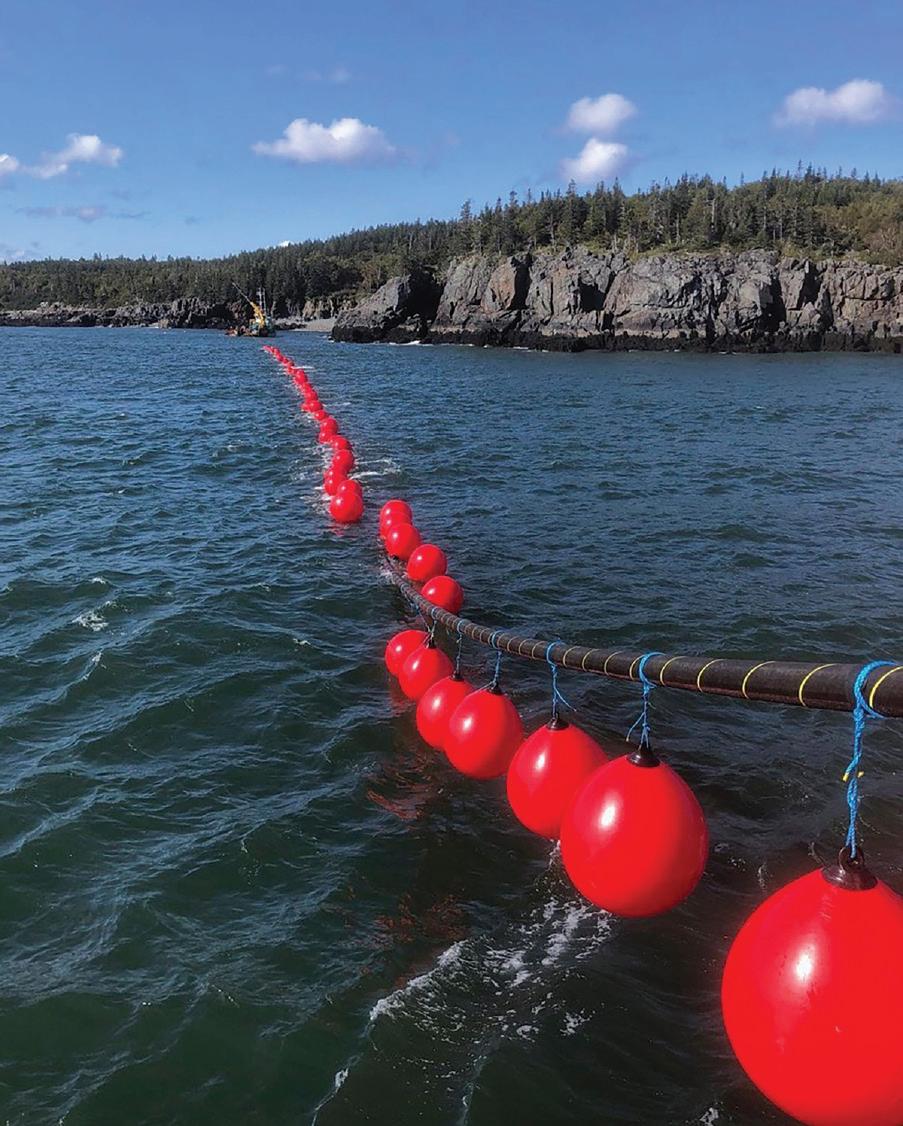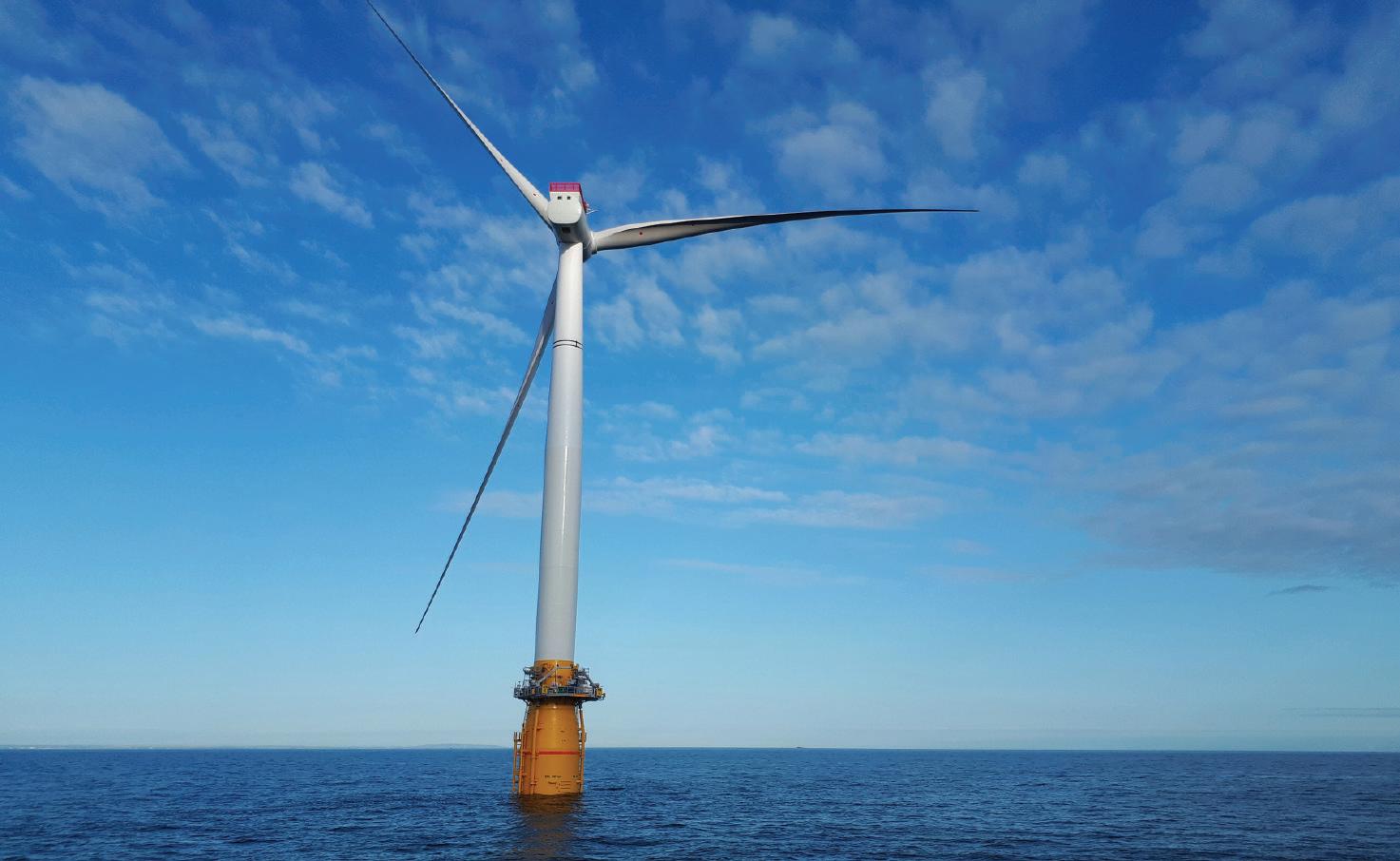
4 minute read
The Special Cabling Challenges of Floating Offshore Wind Farms
The Special Cabling Challenges of Floating Offshore Wind Farms
by Maxime Toulotte
Advertisement
Offshore wind farms are recognized globally as an increasingly popular source of cost-effective and dependable renewable energy. In the United States, while turbines have already started to generate 30 MW from the strong winds off the east coast, additional legislation - in line with state carbon emission mandates - will bring this to a total of 25 GW within the next decade.

Current offshore wind farm technology is limited to regions that have strong and steady winds with extended outer continental shelves, such as the eastern seaboard. For these projects, fixed-foundation offshore wind turbines arrays are anchored to the sea floor (around 150- to 200-feet deep). The power generated by the turbines flows through buried medium voltage submarine cables (called array or inter-array cables), to one or more offshore substations. From there, the pooled green energy is sent to shore via high voltage ‘export’ power cables.
For offshore wind farms in less hospitable environments, such as where the ocean floor drops steeply close to shore and/or the required strong wind is very distant, an alternative approach is required. Enter “floating” wind farms. This technology involves wind turbines and offshore substations that are not bottom-fixed to the ocean floor, but rather placed on floating structures that are anchored to the seabed.
The good news is that the development of floating offshore wind farms in the U.S., like that for fixedfoundation offshore wind, will benefit greatly from projects already underway in UK, Portugal, Norway, Spain, and Japan.

Advanced Dynamic Cables
Exporting energy from floating offshore wind farms requires the development of a new generation of export cables - the unseen, yet indispensable vehicles for the delivery of energy to shore. Unlike those for bottom-fixed offshore wind farms, these cables will be subject to additional variables such as hydrodynamic effects induced by waves and currents, the movements of the floating platforms in relation to the bottom of the ocean, and the effect of their own weight. So far, the needs have been met with dynamic cables rated at 34.5kV and 66kV using wet insulation designs that are similar to array cables and other elements used in umbilicals for the oil and gas industry. However, these designs will not work for the export cables needed for utility scale, floating offshore wind farms, will need to carry far more power at a much higher voltage.
The mechanical strength and fatigue property requirements for large floating wind farm cables far exceed those for export cables used with bottom-fixed offshore wind farms. One challenge lies in the use of lead sheaths. While they protect the export cables’ insulation from humidity and water penetration, they have limited metal fatigue properties when subject to constant movements. Another challenge for floating wind farm export cables is their weight. For a given weight per foot, the cable will break beyond a certain depth at the point where it is hanging. Different technological improvements are being developed for extending the range of the wet insulation design to the 115kV voltage class. Researchers are also working on finding ways to create water barriers (such as using alternative metallic alloy foil between the cables’ insulation and the jacket for higher voltage classes).
Whatever the solution, it would have to work over long distances and remain sturdy and flexible enough not to break under the stress of constant movement. OEM engineers will need to understand and predict the lifetime of the different cable components, considering operational loading and environmental conditions. Testing and modeling will be necessary to account for fatigue, corrosion, and delamination, as well as to identify the materials that can bypass common failure scenarios. The next innovation in HV submarine cable technology will require a holistic engineering approach, as any structural changes to known designs will affect other properties of the cable system.
The opportunities to develop offshore wind farms has reached U.S. shores, and momentum among the states will continue to grow as Americans become accustomed to seeing turbines off their coasts - and appreciate the clean energy benefits they provide. In the not so distant future, floating offshore wind farms will become part of the equation.

The (Very Near) Future of Floating Offshore Wind
The Carbon Trust (2020) reported that the global aspiration for floating wind could reach 10.7 GW by 2030, and up to 34 GW by 2035. This assumes that favorable policies in key floating markets (including the U.S.) will enable the transition to additional commercial-scale projects. In addition, it is widely believed among wind industry experts that the cost difference between bottom-fixed and floating offshore wind farms will become negligible in the coming years, thus eliminating a major hurdle.
With the technologies rapidly evolving, floating offshore wind farms will become economically and logistically viable. This in turn should unlock their market potential, and help countries around the world realize a cost-effective and carbon-neutral way to solve their growing energy needs.

Maxime Toulotte is Nexans’ Head of Technical Marketing for its Subsea and Land Systems Business Group.




